NKPC Celebrates 5 Years of Progress
“Start by doing what’s necessary; then do what’s possible,
and suddenly you are doing the impossible.”
St. Francis of Assisi.
Five years ago today, on the evening of September 16, 2012, approximately 50 people gathered at Windmill Suites to attend the very first Community Meeting of No Kill Pima County (NKPC). Our presentation focused on our community’s challenge by giving the outcome data of animals saved and killed and we introduced a solution known as the No Kill Equation, also known as These components, when comprehensively implemented, have been shown to enable communities to save all animals that are not irremediably suffering or are an unrehabilitatable danger to the public and have not been able to find alternative placement. Read more about the equation and definition here: No Kill Advocacy Center
At this initial meeting, we also offered hope for the future with a side by side comparison of demographics and shelter data between Pima County and Austin, Texas, who had been saving more than 90% of animals for more than a year. We also reviewed the success of Reno (Washoe County), Nevada who had a much higher per capita animal intake rate than PACC and was also saving over 90%. The meeting concluded with a participatory exercise to establish the guiding principles of NKPC and the establishment of 4 task forces.
The Pima Animal Care Center (PACC) has come a long way in 5 years from when 68% of all cats and 43% of all dogs were destroyed. That equates to 5 animals every hour they were open for business or 1 death every 12 minutes!
With ongoing community meetings to raise awareness and solicit participation, in 2013 NKPC began meeting regularly with the management of PACC. At the time, PACC had a strong rescue program (2,991 animals placed with rescue partners in the fiscal year 2012) and a strong volunteer program. The other 8 components of the No Kill Equation were weak or non-existent.
NKPC provided a list to PACC leadership of approximately 60 recommendations, half of which were improvements that were possible at little or no cost to the county. These recommendations constitute efforts to save the savable through the vigorous implementation of the No Kill Equation.
LITTLE TO NO COST
Most of these items are in the ‘achieved’ or ‘extremely improved’ category! ( *The asterisk indicates NKPC’s significant role in the progress achieved).
*Publicly commit to wanting to achieve at least a 90% save rate and ask the community for help
*Partner with NKPC and other stakeholders
*Change use of language and remove the term “unadoptable” for treatable and rehabilitatable animals and make them “available”
*When an owner requests for euthanasia, evaluate these animals for adoption or rescue the same as any animal, rather than death on demand.
*Waive redemption fees the first time an owner redeems their lost pet at the shelter.
*Public information and Resources Desk
*Employ basic sanitation protocols
*Exhibit transparency in public relations including shelter risk factors and outcomes
*Maintain lost pet report information, lost reports online along with ‘found animals’ and strays and enable online reporting of lost and found pets (-lost reports not yet posted and online reporting not enabled)
*Educate and advocate for Trap Neuter Return and provide information to help staff to assess if a cat is truly feral or rather fearful
*Encourage temporary fostering of strays (with finder or rescue)
Institute a point of contact protocol to assure messages are returned for ‘urgent’ animals
Utilize the xray machine on campus
Utilize medical interns and volunteers more fully in testing, medicating and monitoring
Require Owner surrenders to provide vet information or request medical records
Implement adoption counseling and matching protocol
Make all animals available to rescue
Increase purebred rescue partnership collaboration
Training, support and recognition for the volunteers
Increase recipients of spay neuter funding
WITH ADDITIONAL RESOURCES (often just staff time)
Most of these fall in the achieved or improved category.
*Treat the treatable and reserve euthanasia for the incurably suffering (tremendously improved, but not fully there yet!)
Trap Neuter Return and Shelter Neuter Return for feral cats
Foster care, including specialized care and foster to adopt
Institute the most humane euthanasia protocols including pre-sedation whenever possible
Vaccinate all animals at intake
Train volunteers/dogwalkers in socialization and basic training techniques
Improve basic cat care, handling and enrichment (this was its own comprehensive list)
Individual behavioral intervention program and play groups
Other recommendations included in 2013 that we are hoping to see follow through on include:
*Treating the treatable and employ euthanasia as it’s true definition, for the incurably suffering which PACC is continually making strides on
Set goals for adoption (both on-site and offsite) and for other live release outcomes
Implement adoption follow-up support/services protocols
Require animal protection officers to scan for chips and use other methods to attempt to return found animals to owners in the field
In addition to our recommendations, non-exhaustively, some other responsibilities and achievements of NKPC are:
Sponsoring animals and recruiting fosters to support rescues in pulling more from shelter
Diversion services at intake
The development of a community resource directory for owner retention and shelter diversion
Posting stray and ‘found reports” to the public
Funding outside veterinary care for PACC’s in need and at risk animals
Marketing of PACC’s special needs, longtimer and seniors to the public and suggesting strategy to PACC to do such
Leading a community awareness campaign since 2012 to let the community track outcomes and to help inspire action
Recruiting and referring PACC volunteers at events and on our website
Informing and referring public of PACC’s need for fosters
Providing resources on best practices in shelter animal handling in the shelter
Focusing on lost pet outcomes with the Lost Pet initiative, including monthly low cost microchip events starting September 2017.
Where do we go from here?
No Kill Pima County takes pride in all this community has accomplished, while recognizing there is still much work to do.
The current status of PACC outcomes is an 85% Live release Rate.
Most of these outcomes have significantly improved, with the exception of ‘rescue’ which has significantly declined to less than ½ the number of 2012, and ‘returned to owners’ which has minimally improved.
For more details on PACC intake and outcome data see our page: Pima County’s Challenge-By The Numbers.
Foster care, behavioral interventions and owner retention support have not yet reached their potential and as always, a shelter cannot reach the goal of saving the saveable without ongoing community support AND participation.
A groundbreaking resource for assessing and tracking that each animal entering the shelter is afforded the best opportunity at life or given a true euthanasia when absolutely necessary can be seen here: Animal Evaluation Matrix, by the No Kill Advocacy Center.
We are grateful for all that have given energy, expertise and resources in support of No Kill Pima County, shelter pets, Community Cats and to the community at large of of pets and their people. Thank you to all that have and are participating in this work to truly save the savable, a tireless mission that is both heartwarming and heartbreaking.
To learn more about NKPC visit our webpage at: nokillpimacounty.org/
To make a contribution towards our work: Donate to NKPC

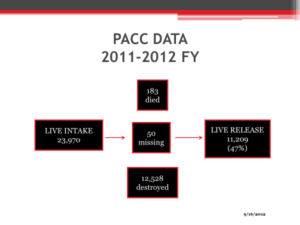
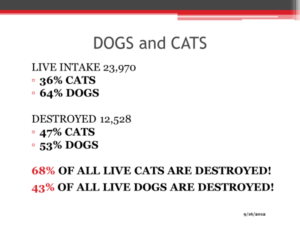
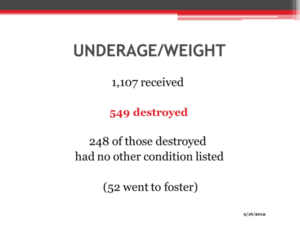
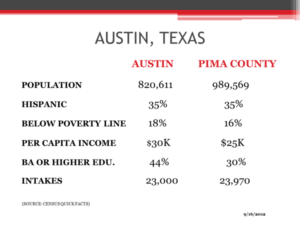
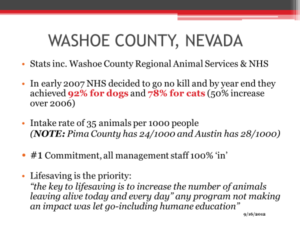
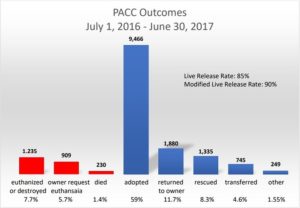
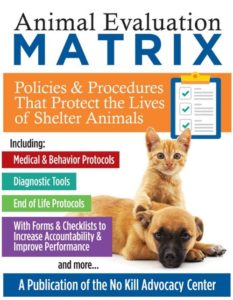
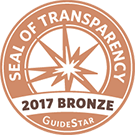
Congratulations to you,Marcie and all that have served with you, for all that has been accomplishment through and by No Kill Pima County. It was amazing to read all that NKPC put into motion in those early years and continue to do so. I am proud to be a volunteer for NKPC! Thank you!
Ps I think we should have a 5 year celebration